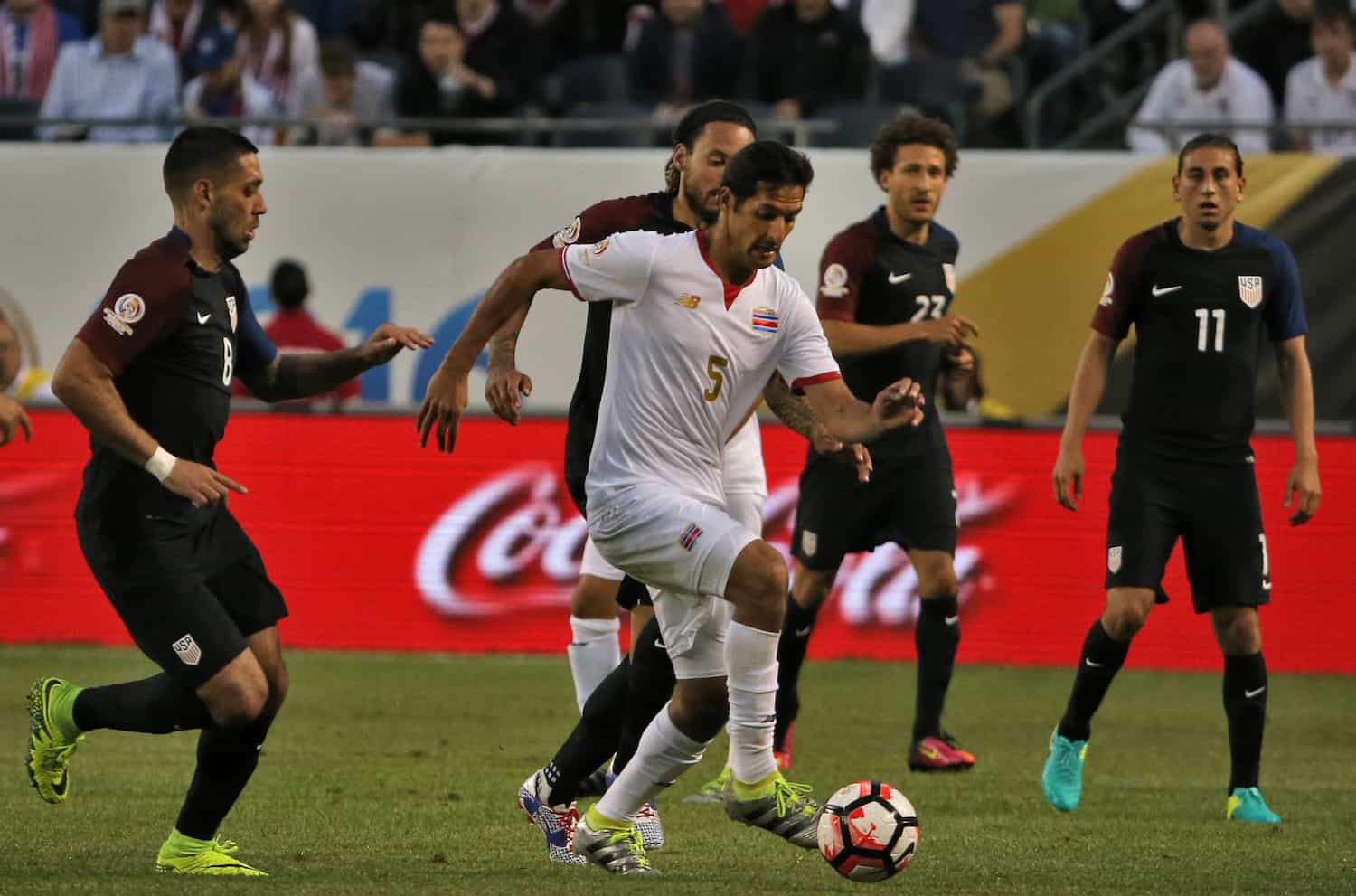HOUSTON, Texas – In its most important international tournament in two years, Costa Rica has shrunken back down to size after its giant slayer role in the 2014 World Cup.
Absent a miracle, its nightmarish and short-lived Copa América experience is about to come to an end Saturday against Colombia, and La Sele will have to wait another two years before it’s back on the world stage.
The results here, especially the 4-0 drubbing by the United States, will leave a bitter taste until then, and most certainly bring up questions about the direction of the national team under head coach Óscar Ramírez. Though it is doing well against lesser CONCACAF foes in World Cup qualifying play so far, this latest tournament performance will not inspire anyone to expect another great run through the 2018 World Cup if Ramírez’s system remains static.
The last match of Group A may seem like a pointless affair, as La Sele technically has to beat Colombia by four goals and Paraguay would have to beat the U.S. 1-0. The way they’re playing, it’s hard to imagine Costa Rica scoring a single goal, let alone four goals. Even still, this is an important match for Ramírez and his group to prove what they’ve been saying: that the blowout loss to the home team U.S. was an aberration and not representative of this selection’s true style.
Put pressure on Colombia’s defense
The Colombians are as talented as any team in this tournament and what they do so well is control the ball and mitigate the risk of turnovers with decisive moves. Though James Rodríguez gets most of the goals and recognition, midfielder Juan Cuadrado is the key piece for Colombia coach José Pékerman’s attack.
The team slowly applies pressure the way a python does, by slowly strangling control of everything and not allowing its prey the strength to attack back.
What the U.S. did so well against Costa Rica was to sit back and wait for the Tico attack to come to it, then outplay a ball for a turnover and counter with a quick break down the field. Against Colombia, who is far more disciplined than the U.S. on both sides, Costa Rica cannot afford lackadaisical possessions.
Midfielders Celso Borges and Bryan Ruíz are La Sele’s two leaders, and they have to be present for their team for a full 90 minutes. Too often in this tournament they’ve disappeared with passive, wait-and-see play that has failed to challenge a pair of respectable defenses.
This match comes down to how those two are able to cut off opportunities for Colombia in the middle and string together valuable offensive possessions that apply constant pressure on goal.
Prove you do one thing well
The world knows by now that this team’s best asset is injured goalkeeper Keylor Navas. What Costa Rica hasn’t been able to prove to the world, though, is that it can win without the Real Madrid star in net.
Of course, his presence in this tournament wouldn’t have prevented Costa Rica from being last in its group (maybe the U.S. would have scored two goals instead of four), and that’s largely because Ramírez’s defense has lost any luster it once had.
As it stands, La Sele is mediocre on all three levels, but it’s the five-man backline that has been most disappointing. In its first game against Paraguay the defense allowed a few first half opportunities that could have easily been goals. In its second game, the U.S. took advantage of all those equivalent opportunities that Paraguay had failed to convert on, wrecking through the center of Costa Rica’s porous-looking backline.
If this team isn’t going to get it done on the attack, where it lacks consistent pacesetters, then it better be disciplined and stout on the back end. This task becomes harder against Colombia’s fleet of playmakers due to the injury of wing defender Cristian Gamboa, La Sele’s most reliable defenseman. However, Premier League player Bryan Oviedo is more than capable of taking on Colombia.
With Oviedo and Kendall Waston back in the lineup, it will be up to the defense to play smarter and more aggressively than it did against the U.S., where it was caught sleeping on multiple breakaways. Colombia will provide an even bigger test to measure where Ramírez’s defense really is.
Keep it competitive
It sounds self-apparent that you would hope to stay competitive against Colombia, the world’s third-ranked team. But for a team coming off a crippling loss like Costa Rica’s, it’s necessary to avoid another embarrassing result on the world stage.
“We’re not going to quit just because of one bad game,” midfielder Yeltsin Tejeda told reporters Thursday.
This celebratory edition of the Copa América doesn’t count for anything in a football sense; It’s more about fighting for international respect than anything.
South American teams are known for playing chippy and physical football. Costa Rica needs to assume that style itself and morph into a tougher team.
Ramírez and players maintain that they’re not going to change their style of play, but it has become increasingly apparent that this team no longer has a cohesive identity to lean on.
Long gone is the brilliant defensive-based strategy that led to opportune counters on offense. Ramírez has attempted to revive that World Cup defense implemented by then-coach Jorge Luís Pinto, but execution and positioning have yet to form.
On Saturday, it’s about churning out a respectable product against a world-class Colombian side. Another blowout on a big stage is only going to lead to more questions and doubts surrounding this team’s future.






